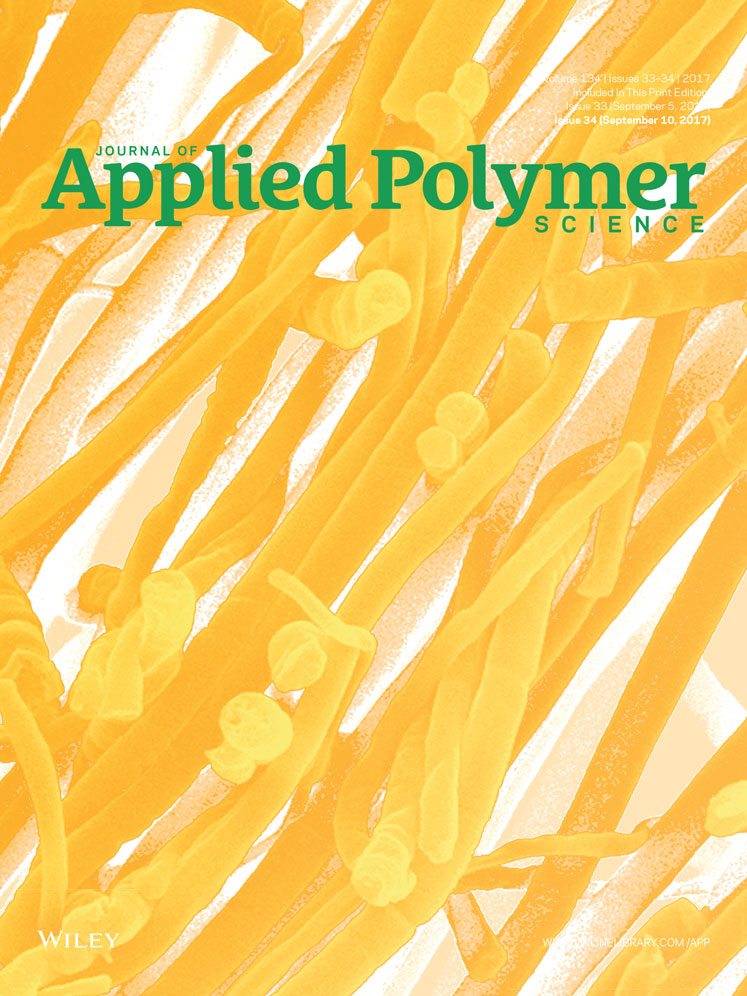Rheological behavior of ethylene–vinyl acetate copolymer and fabrication of micropyramid arrays by roll-to-roll hot embossing on its thin films
ABSTRACT
Films of ethylene–vinyl acetate (EVA) copolymer with different vinyl acetate (VA) contents were adopted as flexible substrates for fabrication of micropyramid arrays by roll-to-roll (R2R) hot embossing at roller temperatures 40–80 °C. An empirical relationship between rheological behavior of EVA in rubbery state and demolding performance of the films was explored. Dependence of average forming height of micropyramid arrays on VA content and roller temperatures was investigated. Our study showed that both viscosity and relaxation behavior of EVA can be related to the ultimate forming height of micropyramids. The relationships can provide references for experimental research and industrial manufacture on R2R hot embossing. Retroreflection of micropyramid arrays was observed and transmittances of the two sides of embossed films were studied. Transmittances of the VA28 film embossed at 60 °C were 97.9% (the embossed side) and 41.8% (the smooth side), which showed potential applications in reflective film and antireflective film fields. © 2017 Wiley Periodicals, Inc. J. Appl. Polym. Sci. 2017, 134, 45228.




